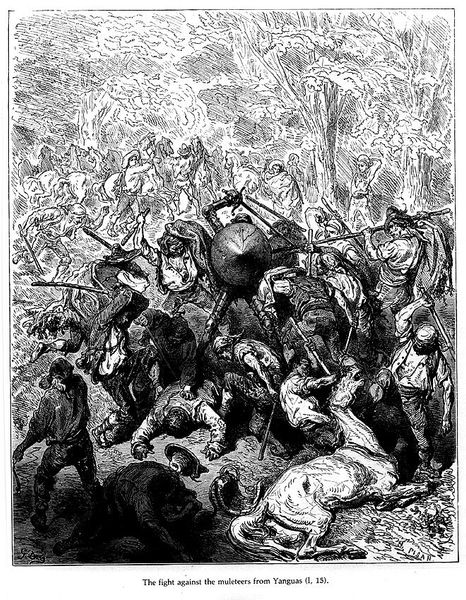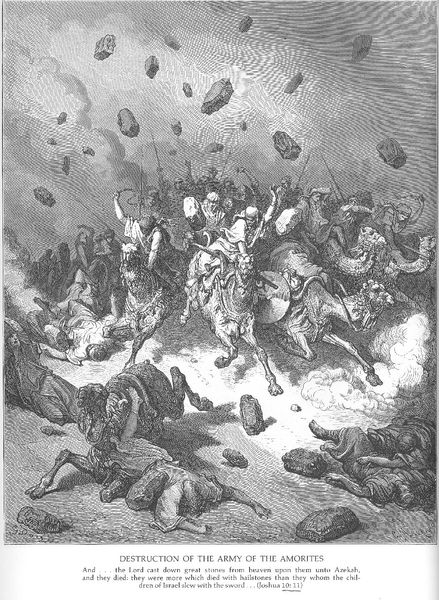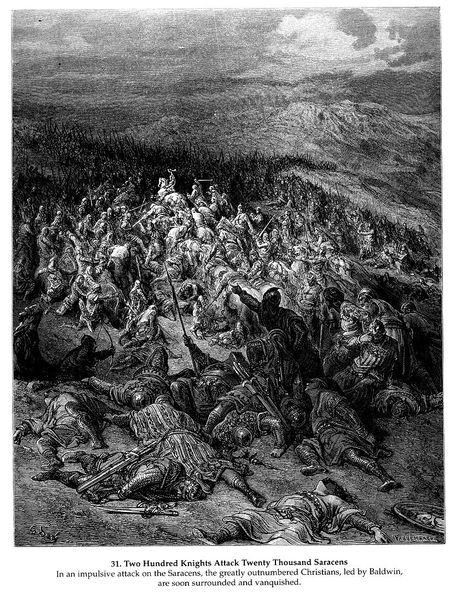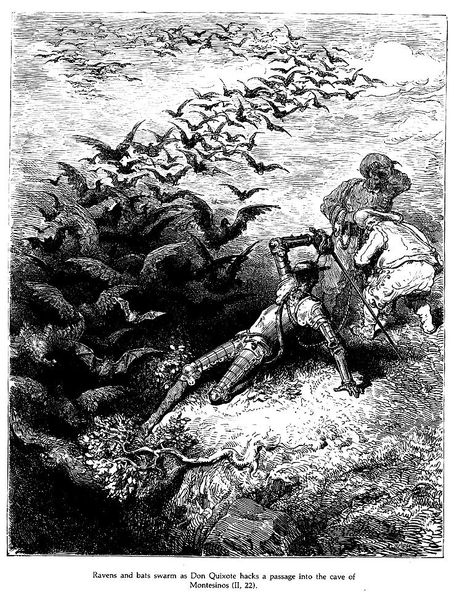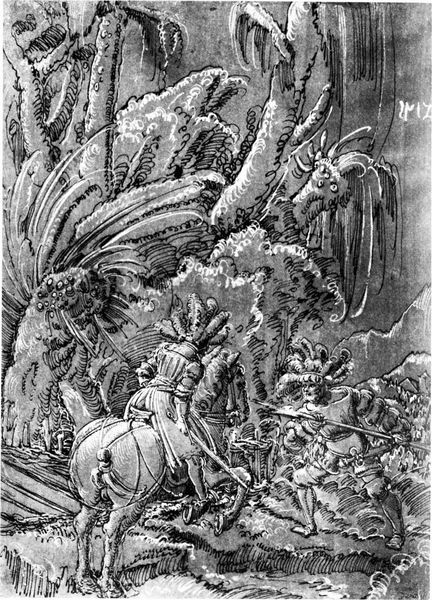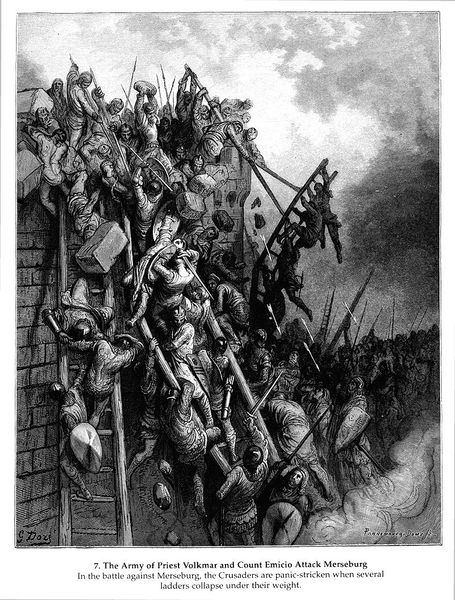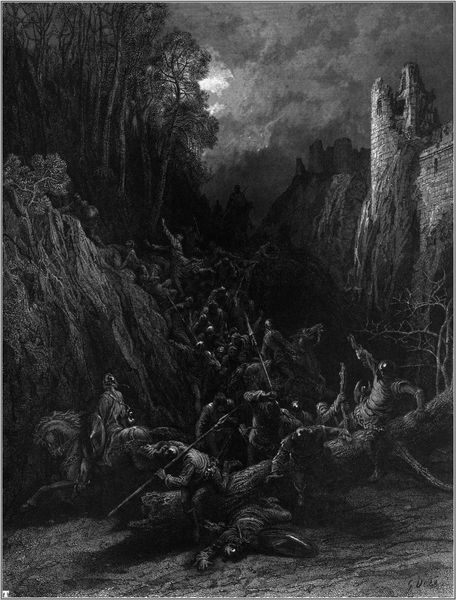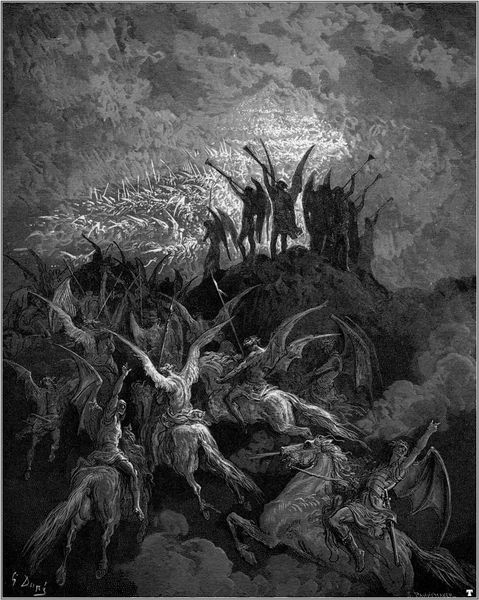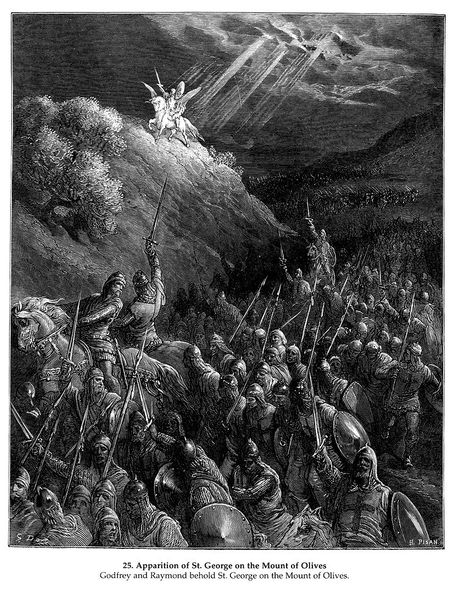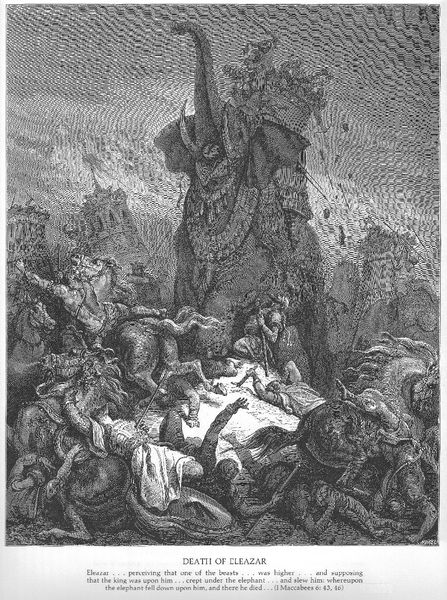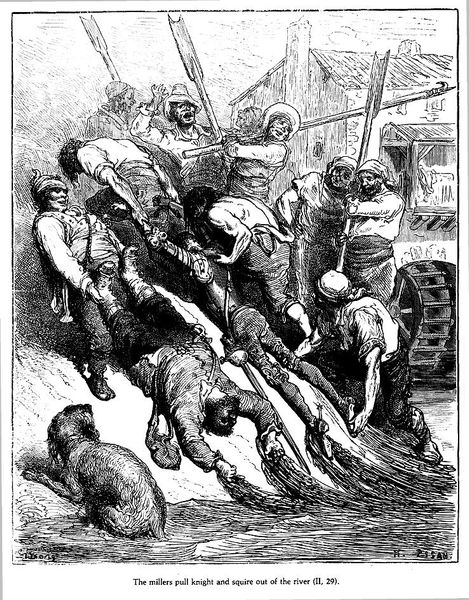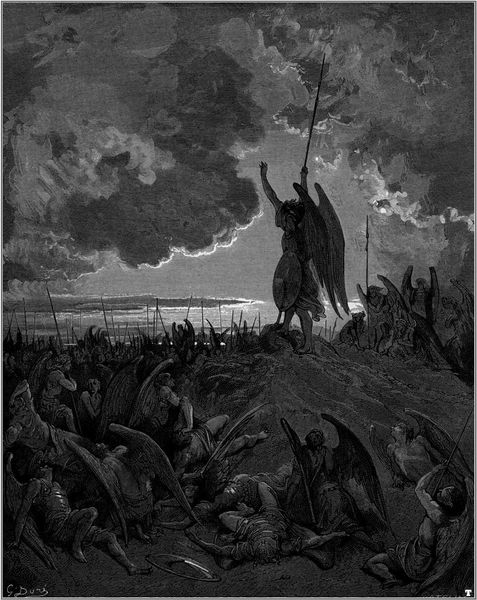
Copyright: Public domain
Curator: Gustave Doré's engraving, "Godfrey Enters Jerusalem," created in 1877, plunges us into the heart of the First Crusade. What strikes you most immediately about this dramatic depiction? Editor: Chaos! An intense feeling of overwhelming violence. The swirling smoke, the press of bodies, the bristling weapons…it's like a visual representation of utter disorder and conflict, quite a striking composition overall, would you agree? Curator: Indeed. Dore’s romantic style is clearly in effect through these dynamic material gestures; we observe labor rendered through sharp photorealistic detail, particularly in the contrast between the crusaders and the architectural framework that they operate in and around. Considering this work, I'm reminded of a crucial question: what did it cost Dore, his publishers, and perhaps a crew of engravers to mass produce this image for distribution, considering it depicts the conquest and subjugation of Jerusalem? Editor: On the symbolic front, notice the determined Godfrey, centered amidst the turmoil. The upward angle, and positioning of the sky draws the viewer to his determined stare, almost like the promise of future triumph through divine intention, further instilling emotional weight and even fear to audiences who believe or associate with any culture of this kind. Curator: And let's consider the materials further: It is crafted entirely from black and white inks. These lines, physically pressed onto paper, produced potentially thousands upon thousands of iterations, spreading ideological considerations on an unimaginable scale through reproduced images that were relatively cheaper to make during the late 19th century. Editor: Absolutely, you're so right about the importance of mass production techniques! That wider circulation definitely amplified its message and symbolic effect to various viewers and communities, shaping collective memories through iconic images. For many audiences in that era, prints like this crystallized the essence of religious warfare, making the emotional impact intensely real despite the remove from the actual historical event. Curator: Examining Doré’s technical method and choice of tools brings home just how constructed and manufactured such a visceral image is: how did each calculated press serve to produce a sense of authority to western audiences, even through its seemingly crude and aggressive form of representation, considering our context now. Editor: Precisely! Its symbolic weight lingers to this day, impacting cultural consciousness around concepts of conflict, power, and even, dare I say, destiny. Curator: Absolutely, considering our different angles of perception. Editor: Indeed.
Comments
No comments
Be the first to comment and join the conversation on the ultimate creative platform.
